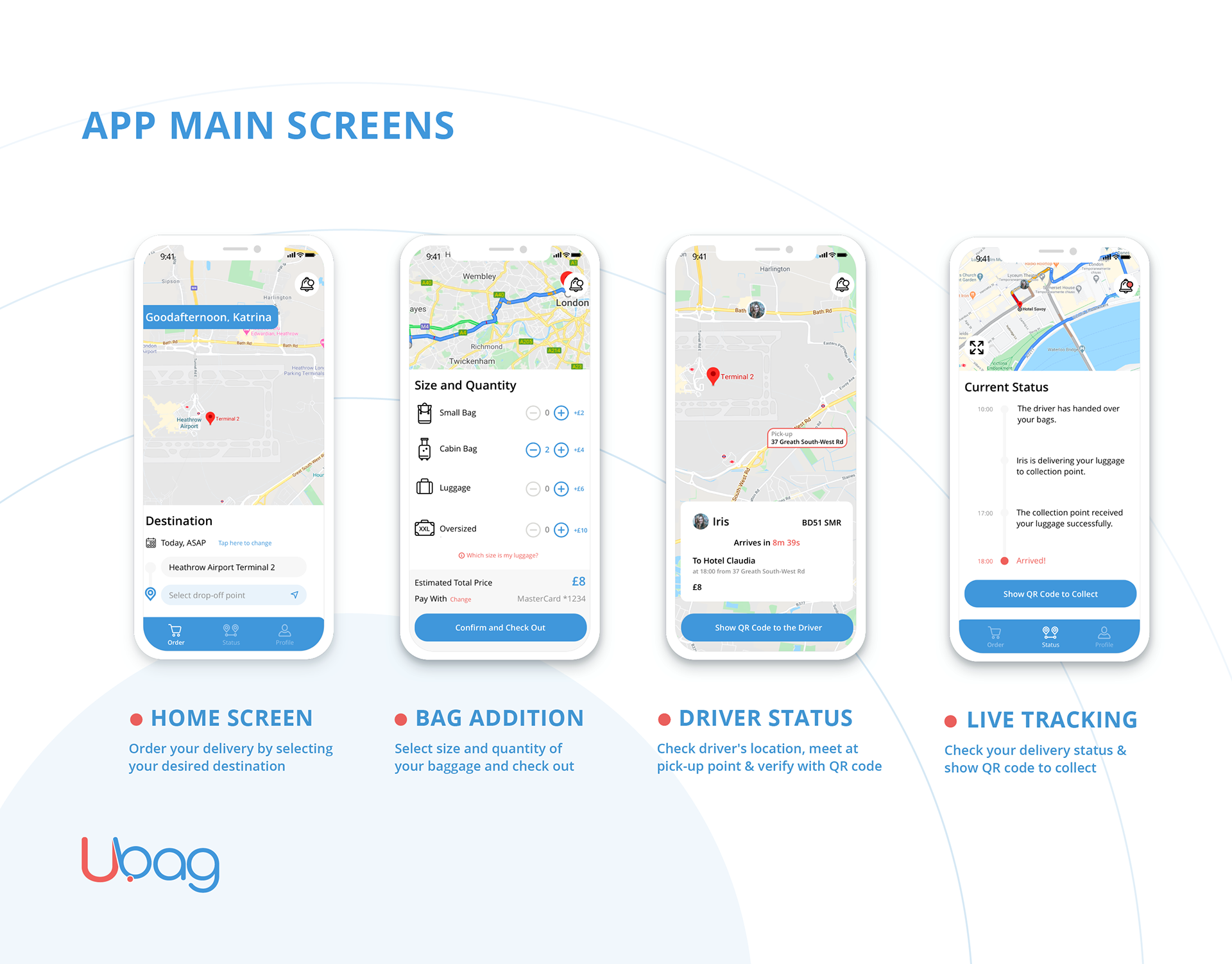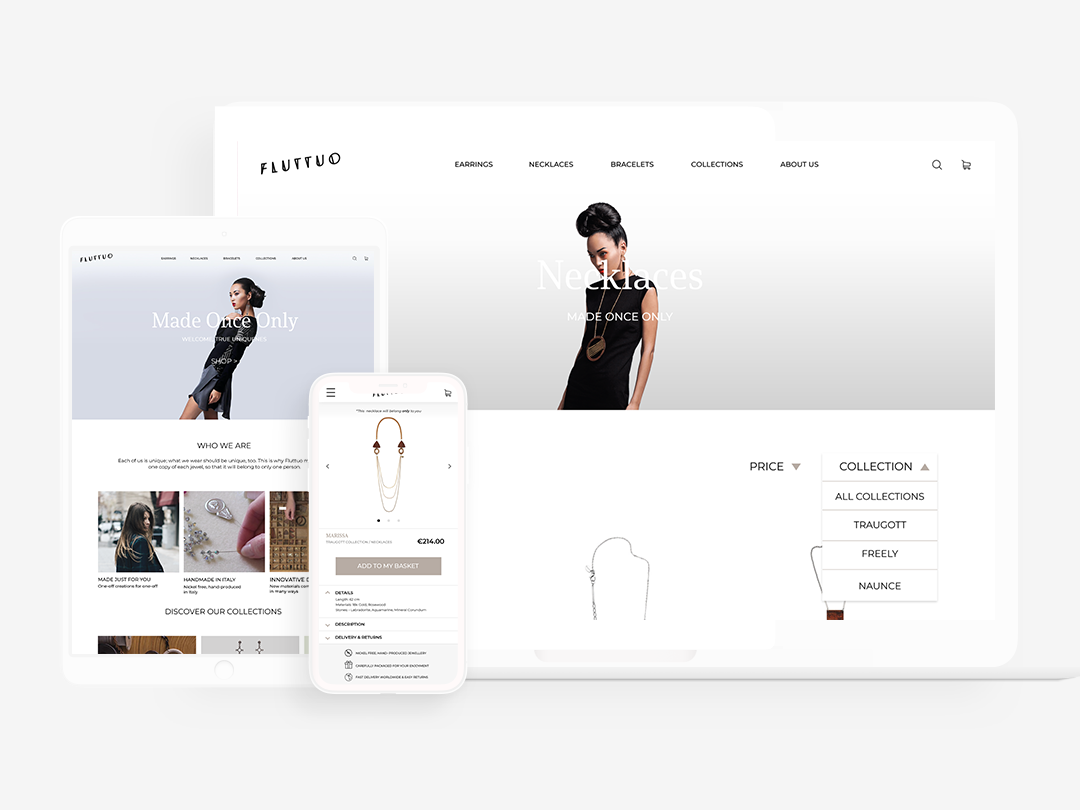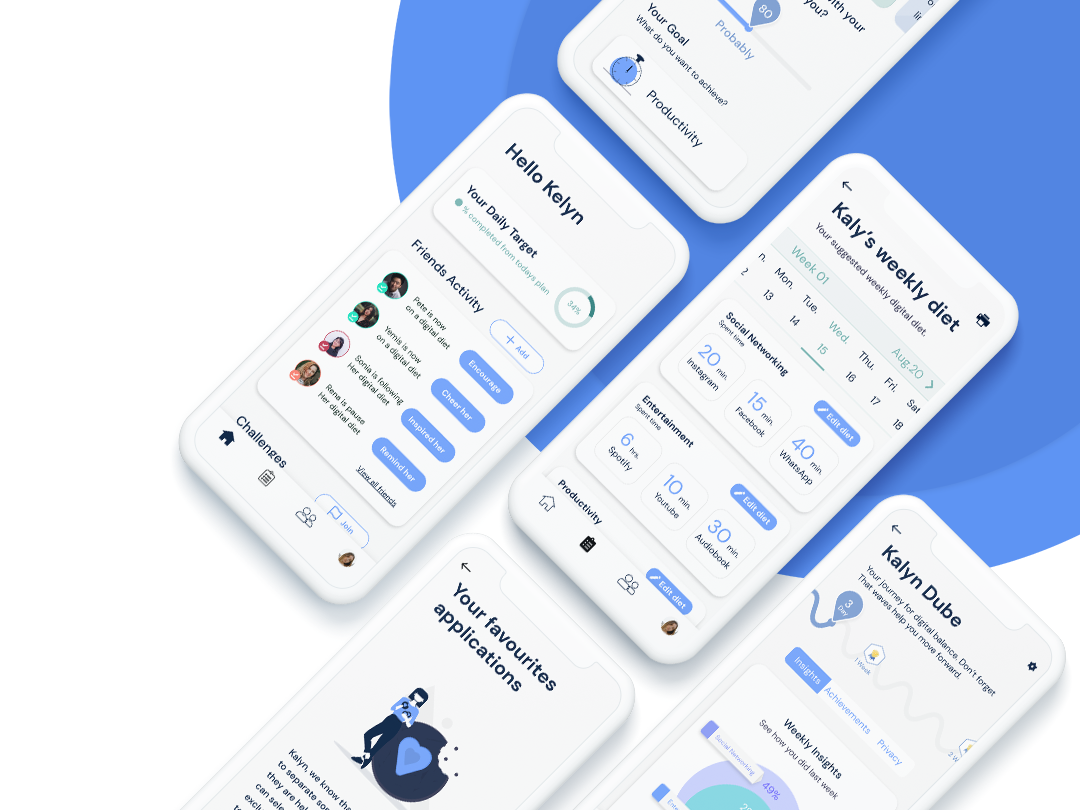Ubag a luggage solution for young travellers
Ubag is a sustainable user to user service that delivers and stores travellers baggage safely for a hands-free journey
CLIENT
Ford Fund Smart Mobility Challenge 2019-2020
Awarded, 2nd Prize
DURATION
3 Months ( 2 days, month)
KEY SKILLS
User Research, Service Design, Prototyping, Presenting, Collaboration
ROLE & TEAM
UX/ Graphic Designer - 6 MA UX Students
The Brief
The Ford Fund Smart Mobility Challenge requests applications for project concepts and prototype proposals that help to address in a fresh, original and creative way, a tangible, unmet social need related to the theme Sustainable Urban Solutions for Future Cities.
The Challenge
After a long flight, train or bus journey, when you get to your destination, you want to relax, eat, and enjoy your trip. There is a problem; you have large, heavy luggage. Your hotel check is not for hours and located on the other side of the city. Carrying around your baggage can stop you from seeing the sights, enjoying the culture and even using public transport.
Opportunity
How might we design a service to enhance mobility and improve young travellers’ experience by using existing transport on the roads efficiently?
Design Process
Initial Mobility Issues
We started with a mind map to find potential mobility issues and outlined initial assumptions in order to select the topic and target user group. We decided to address young travellers’ issues.
Persona & User Journey
We also considered other users, for example, business clients, but left this for future development and concentrated on young travellers. To better understand our target users, we developed a persona and the current user journey.
Competitors Analysis
To understand existing services and products, we conducted the competitor analysis. Existing storage services have limited destination options, lack of security, and use unsustainable methods.
Unpacking the problems & HMWs
Since we explored what mobility problems we are going to tackle, we also considered what the challenges to achieving our vision of a luggage-free journey are? So we brainstormed by generating HMW statements and categorised them into five main challenges we meet.
Bodystorming
To identify the aspects of our concept, we use bodystorming to map out the experience we would like our service to have between users and different stakeholders. It was also helpful because it helps us identify any issues sketch the essential elements for the wireframing. Each one of us had a role, for instance, I was the user/traveller, and we noted down on post-its the several screens that we should design for each of the three user journeys (i.e. the traveller, the driver and the collector).

The Concept
Ubag is a sustainable user to user service that delivers
and stores travellers’ baggage so that they can enjoy a hands-free journey. Tracking system and credible reviews will ensure the safety and trust between users and application.
and stores travellers’ baggage so that they can enjoy a hands-free journey. Tracking system and credible reviews will ensure the safety and trust between users and application.
How does Ubag work?
There are three groups of users that can benefit from our service, the travellers who can enjoy a hands-free journey. Also, delivery drivers, together with staff at the destination points, can earn extra money from carrying and storing luggage. After booking a delivery on Ubag, the driver will pick up your luggage and deliver it to your hotel or an affiliated collection point near the final destination where users can pick up their luggage.

How our service is working
Business Model Canvas &
Service Blueprint
To prove the feasibility of the project and to add details to the concepts, we considered business considerations and the overall detailed usage of the service. After this, we designed the wireframe accordingly.
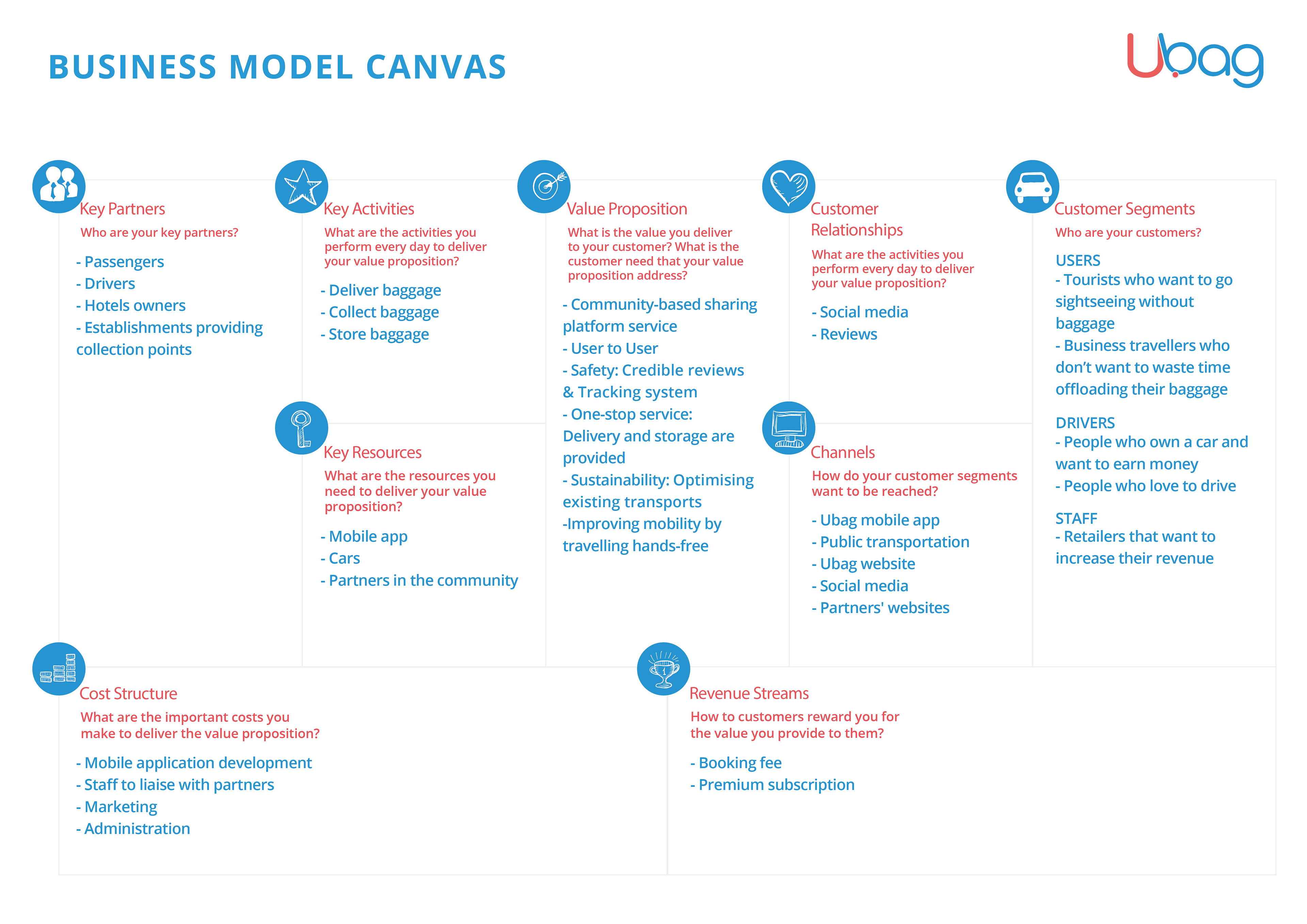
Ubag Business Model Canvas
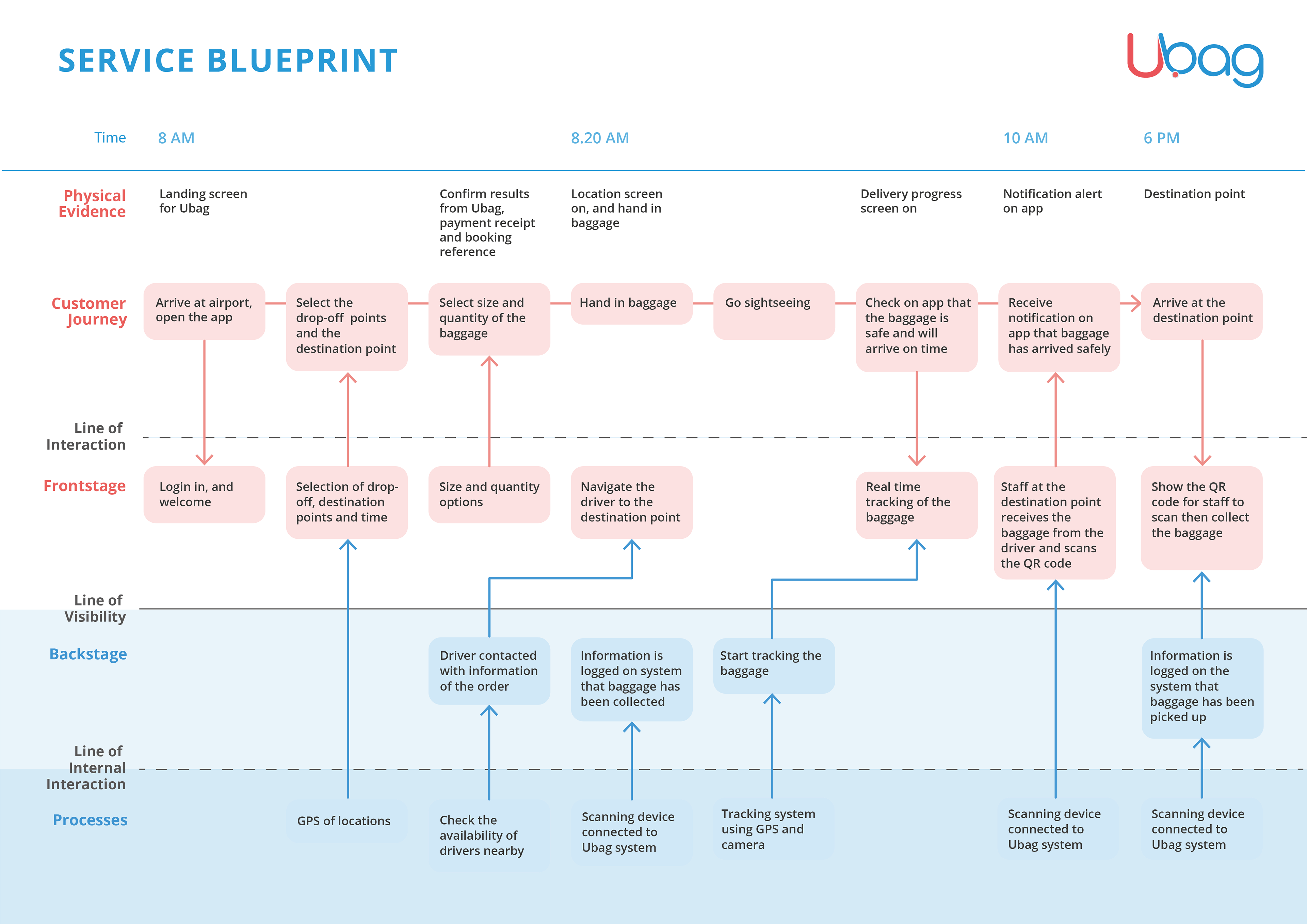
Ubag Service Blueprint
Testing Assumptions Survey
Since we could not test the service in the real world, we surveyed 32 young travellers to know if the target group is willing to use the service given the scenario. 84% of participants answered they would take public transportation if this service is available. Also, 62.5% said, £11 – 15 is the proper amount of delivery.
Wireframes
Before designing the graphical user interface, we created the wireframes for the whole user journey.
Some design decisions were made to guarantee users a sense of security. For example, users are going to show a QR code to confirm with the drivers they meet; they can easily track the current delivery status of the baggage, and users can leave reviews for the drivers and the staff.
Some design decisions were made to guarantee users a sense of security. For example, users are going to show a QR code to confirm with the drivers they meet; they can easily track the current delivery status of the baggage, and users can leave reviews for the drivers and the staff.

App Main UI Design
Therefore, we designed four main screens to show our user interface idea and application of the brand.
- You can book delivery by selecting the desired destination on the homepage.
- You can book delivery by selecting the desired destination on the homepage.
- Add your baggage information and check the driver’s status.
- Then track where your luggage is with the live tracking feature.
